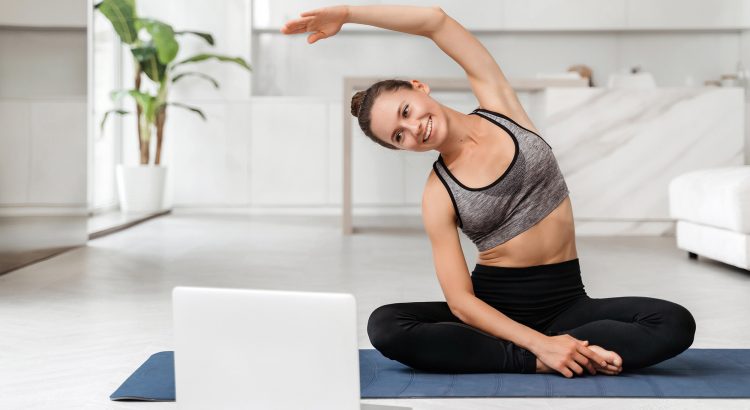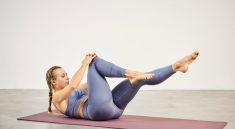Pilates Pila – If someone told me a year ago that I’d be doing planks and roll-ups while a holographic instructor guided me through a serene digital oasis, I would’ve laughed. But this week, I stepped into the future of wellness by trying out an augmented reality Pilates class—and it truly felt like training in the metaverse. With just a headset, a smart mat, and my body, I found myself transported into a next-level workout experience unlike anything I’d imagined.
This article explores how the augmented reality Pilates experience is revolutionizing how we approach wellness, balance, and full-body alignment. It’s not just about the wow factor; it’s about precision, personalization, and a new kind of motivation.
What Is AR Pilates, and How Does It Work?
At its core, AR Pilates combines the traditional mind-body discipline with immersive technology that overlays visual cues, 3D instructors, and performance feedback directly into your environment. You wear an AR headset—like Apple Vision Pro or Meta Quest—and suddenly, your living room transforms into a virtual wellness studio.
The augmented reality Pilates experience begins with real-time posture scanning. My device used spatial mapping to place my instructor just a few feet in front of me. She adjusted to my angles, corrected my form, and even counted reps while the background environment shifted to calming coastal scenery. It’s like a personal trainer, yoga studio, and meditation retreat all packed into one digital layer.
A Core Workout With Real-Time Feedback
Here’s where things got truly futuristic: my AR system analyzed every movement I made. During leg circles, the instructor paused and gave visual feedback on knee placement and hip rotation. The augmented reality Pilates experience eliminated guesswork and forced me to become more body-aware.
It even monitored my breathing pattern, encouraging slower exhales during roll-downs for deeper core activation. I didn’t just follow instructions—I learned. It was like having a biomechanics expert right there in the room, without the awkwardness of human judgment.
Customizable Pilates Programs in Augmented Reality
One of the most thrilling parts of this session was choosing my own AR environment and intensity level. Want to practice balance on a cliffside overlooking Machu Picchu? Or stretch your hamstrings beside a digital waterfall? You can. The augmented reality Pilates experience gives you the power to tailor not just the exercise, but the entire atmosphere of your workout.
The program even adapted mid-routine based on my energy levels, detected via heart rate and motion data. Midway through my session, it switched to a slower-paced breathing sequence, helping me reset. That level of personalization made the class feel more like therapy than exercise.
The Tech Behind the Magic
The hardware may look sleek, but the real star is the software. Many AR fitness platforms now use AI-powered analytics and machine learning to offer a truly dynamic augmented reality Pilates experience. The system learns from your body’s patterns over time, suggesting sequences to target weak spots or recover tight muscles.
What stood out to me was the smart mat’s ability to track pressure points and balance shifts. The AR interface integrated this data and displayed it as glowing footprints on the floor, helping me instantly adjust my stance. It’s hard to go back to static YouTube videos after that level of interactivity.
Emotional and Mental Boosts Beyond the Physical
Beyond the muscle toning and increased flexibility, I noticed a surprising bonus: my mental focus soared. The immersive nature of the augmented reality Pilates experience made distractions disappear. No more checking my phone mid-set or getting bored halfway through a series.
When I emerged from the session, I felt calm, energized, and genuinely uplifted. The guided breathwork, ambient visuals, and responsive pacing created a fully integrated wellness ritual. It was like therapy, meditation, and movement all rolled into one.
Is AR Pilates the Future of Fitness?
It’s hard not to imagine a world where this becomes the norm. With the rising demand for home-based wellness solutions, the augmented reality Pilates experience fills the gap between virtual convenience and in-person precision. You don’t need to commute, pay for pricey studios, or even worry about equipment. All you need is a headset and a willingness to be guided.
Tech giants are already investing heavily in this space, and early adopters rave about the results. From improved form to consistent motivation, the benefits are tangible. And unlike traditional classes, AR allows for infinite variety—no two workouts ever feel the same.
What I Wish I Knew Before Trying It
First: make sure your room is spacious. The augmented reality Pilates experience requires a clear floor space to map your movement accurately. Second: don’t skip calibration. The more precise your body scan, the better the feedback.
Lastly, trust the system. It might feel strange at first, interacting with a holographic trainer, but the guidance is remarkably intuitive. After ten minutes, I forgot it was tech—I was simply flowing through the poses with natural focus and ease.
Final Thoughts on My AR Pilates Journey
My foray into the augmented reality Pilates experience has reshaped how I view home fitness. It’s engaging, educational, and strangely soothing. In a digital world often criticized for disconnecting us from our bodies, this innovation does the opposite—it roots us more deeply in mindful movement.
This isn’t just a trend. It’s a new frontier in wellness that blends technology and tradition in a beautifully balanced way. Whether you’re a Pilates pro or total beginner, the AR approach is worth exploring.



